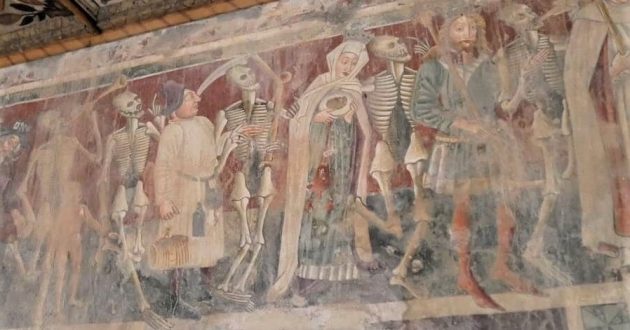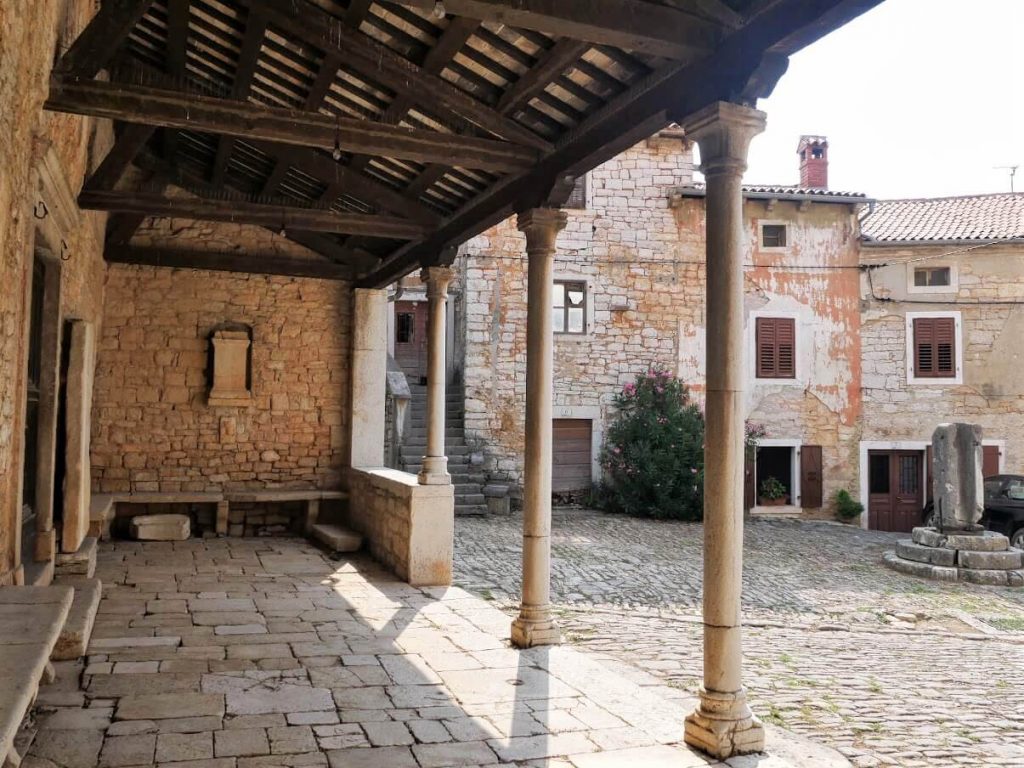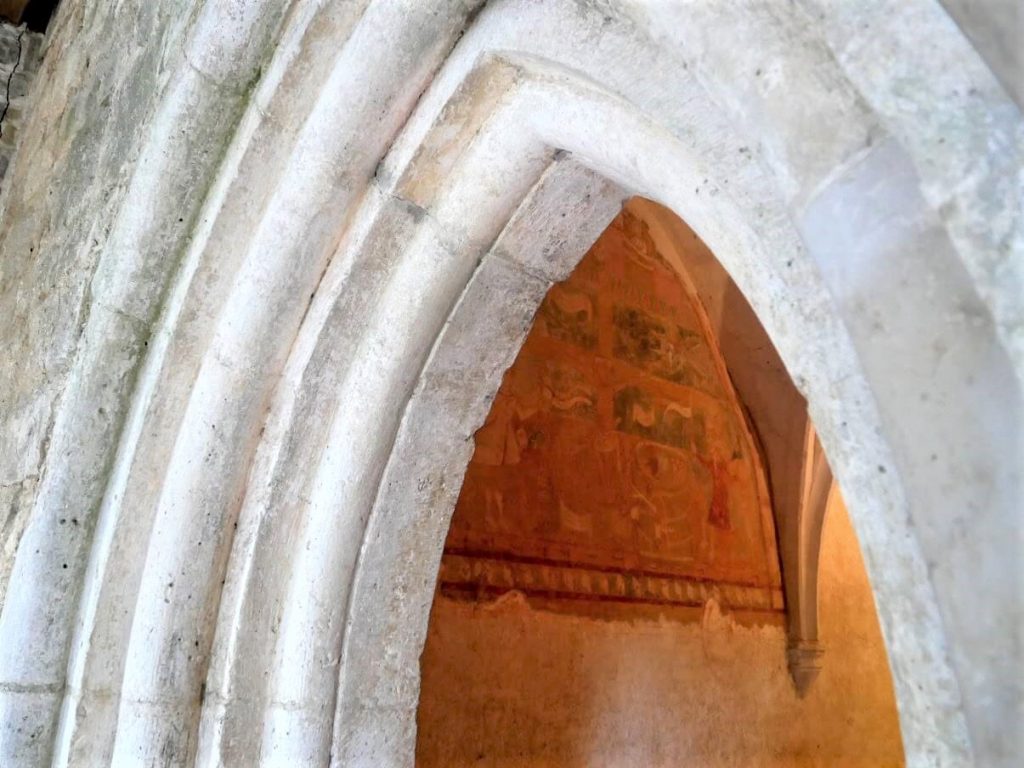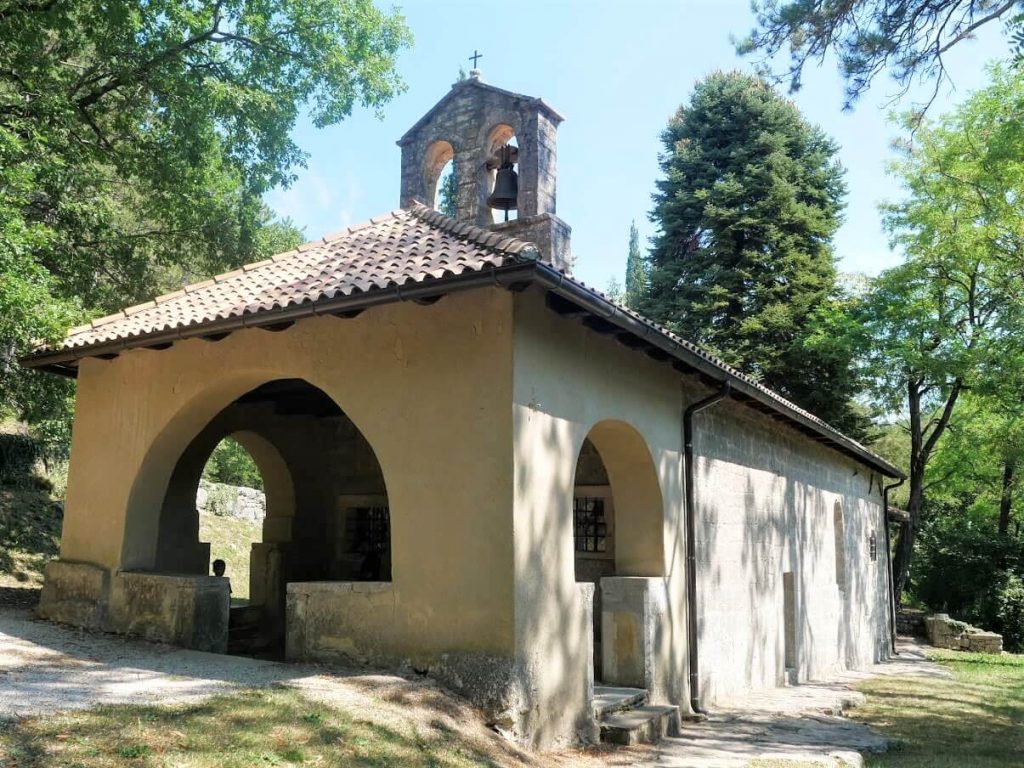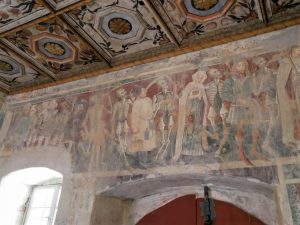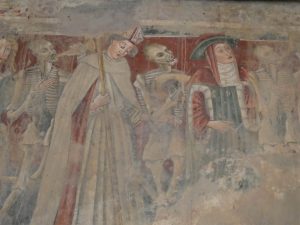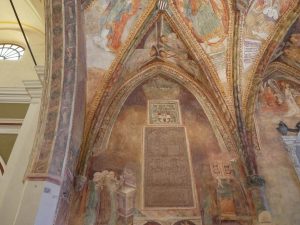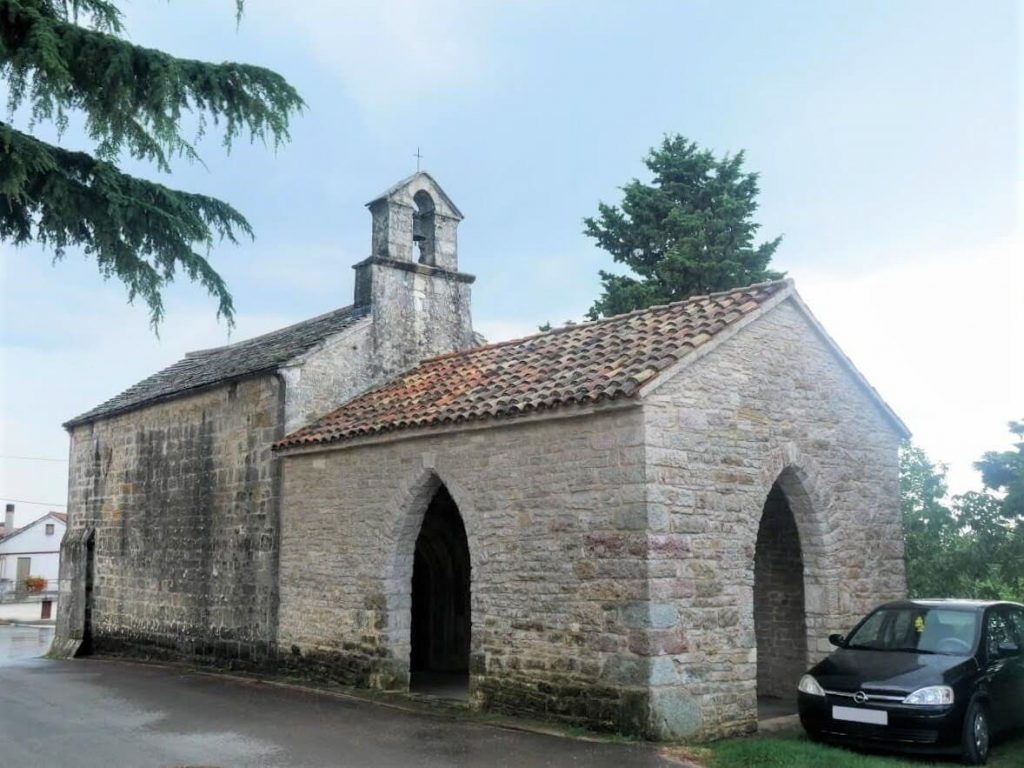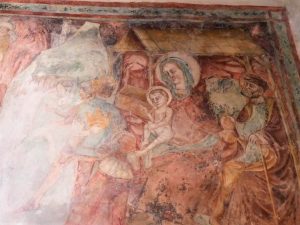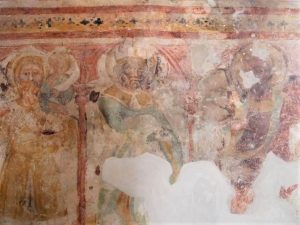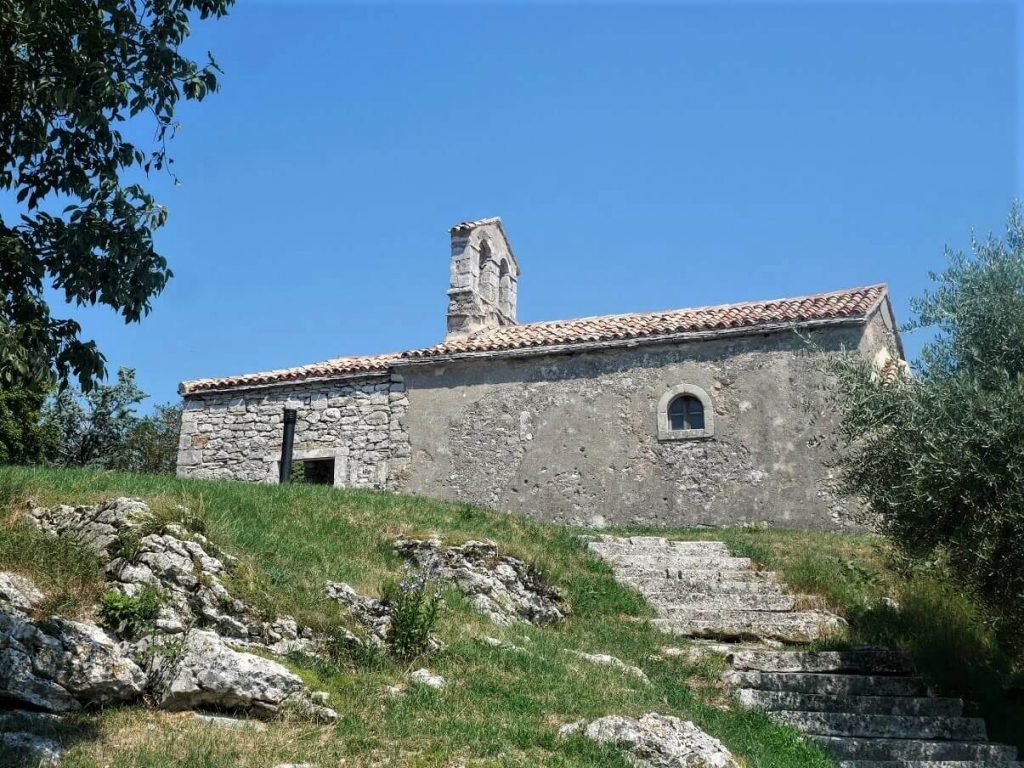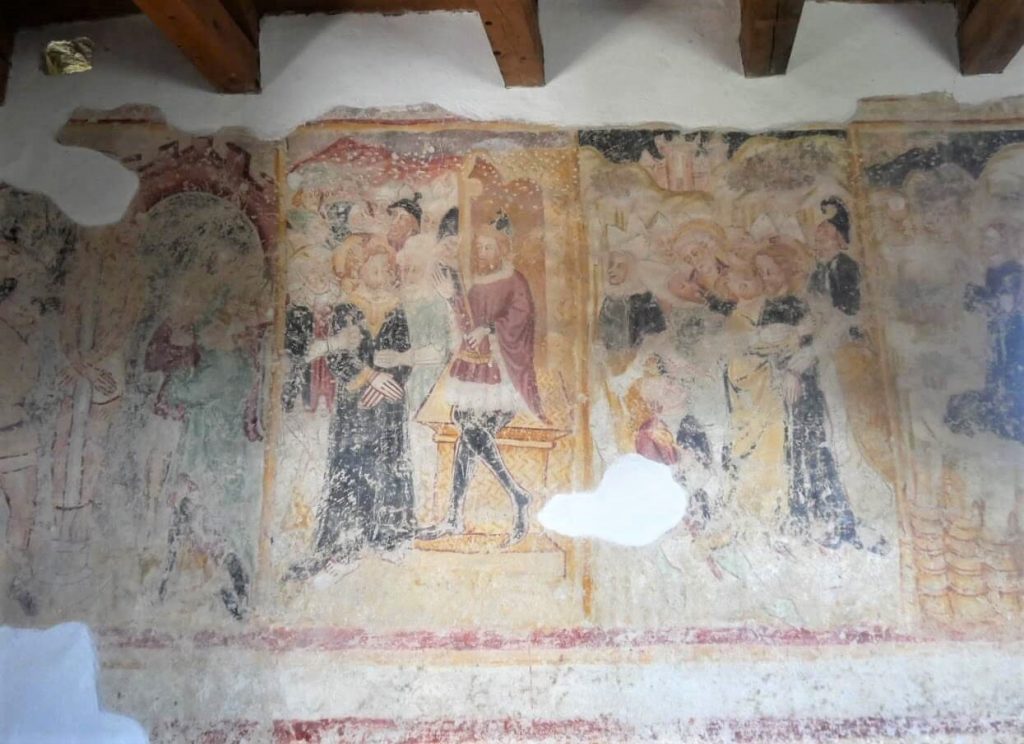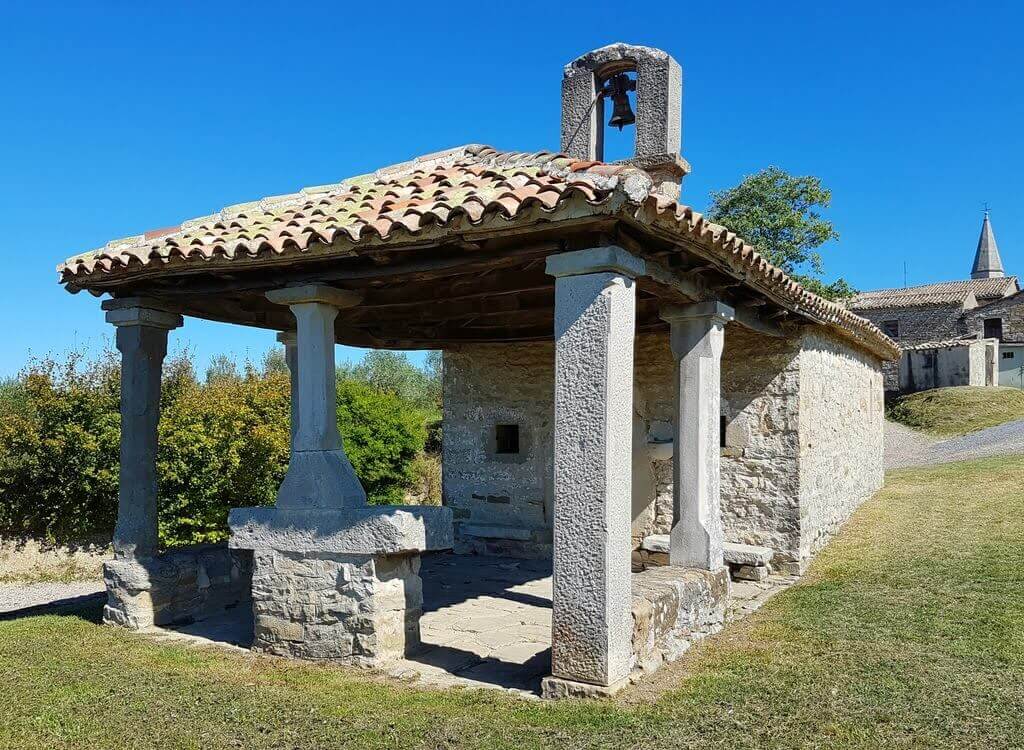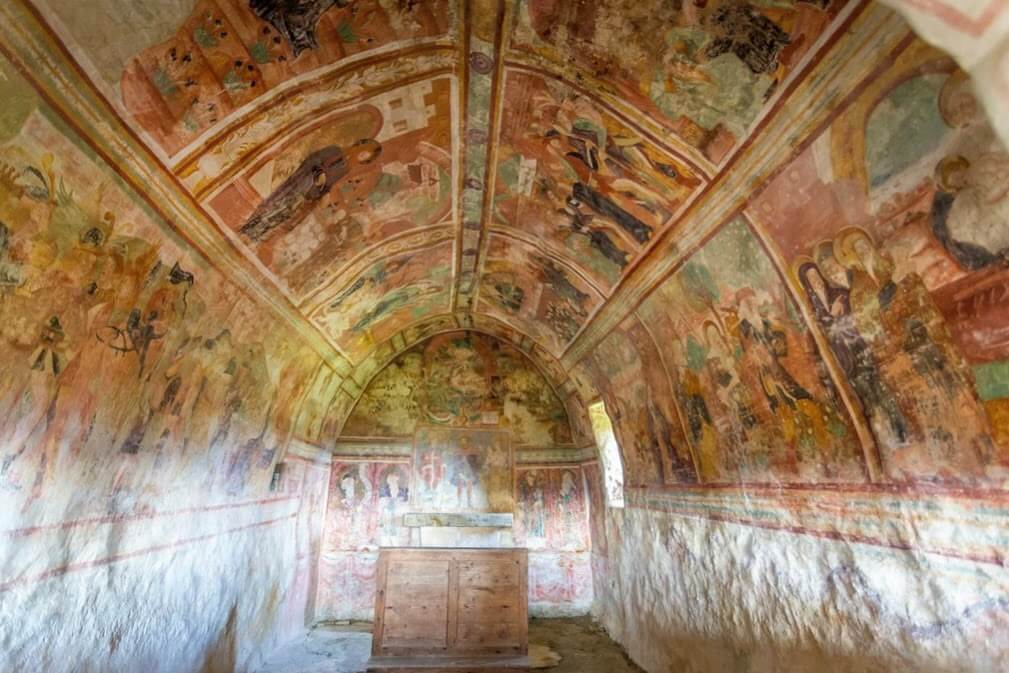Istria is famous for its Roman heritage, numerous charming little towns, truffles and delicious wines. However, the largest Croatian peninsula is also home to some fantastic medieval wall paintings. Frescoes in Istria have a fascinating history, many different subjects and they can be found at the most unusual hidden places.
Exploring them feels like being on a memorable trip back to history. And all of that while taking the unbeaten paths, strolling through old cobbled streets and meeting locals living there.
The history behind the medieval frescoes in Istria
During the Middle Ages, the vast majority of people living in Istria (as in the rest of Europe) couldn’t read. The way they were learning about the saints they worshipped was by observing the frescoes depicted on the walls of medieval churches.
A strict set of iconographic rules gave directions on how those images should look like. They described particular objects the saints held in their hands and the colours used on those paintings.
During the late Middle Ages, painters also used a sort of a guidebook called Biblia pauperum. It was a book of standardized drawings that were used as a preparation for the fresco paintings. Almost all the painters travelling around Europe during that time made their paintings according to the images in it. That’s why very often those medieval wall paintings you’ll find in all corners of Europe have a very similar layout.
The oldest frescoes in Istria were made at the end of 8th century in Saint Sophia Church (Sveta Sofija) in Dvigrad. Today, the fragile fresco is displayed at the Archaeology Museum of Istria in Pula.
Istrian frescoes followed many different styles throughout the time. Saint Martin Church (Sveti Martin) in Sveti Lovreč from 11th century, is with its vivid colours showing the Ottoman influences. Frescoes at Saint Fosca Church (Sveta Foška) in Peroj, painted during the 12th century, are having a mix of Byzantine iconography and Romanesque style. While in Saint Nicholas Church (Sveti Nikola) in Rakotule from the 14th century, the Italian Romanesque style with a strong influence of Giotto is present.
Majority of Istrian frescoes were made during the Gothic time. They are becoming even more colourful, filled with numerous small details, legends and folk stories.
⤷ Read more: Istria Travel Guide
Who created frescoes in Istrian churches
The history of Istria is as fascinating as the frescoes themselves. Although they changed their rulers several times, Istrian coastal towns such as Pula, Rovinj or Poreč were mostly under the control of Venice. While the inner part of the peninsula was ruled by the Habsburg Empire. That’s why the influences in those towns were quite different.
However, although belonging to the different states, merchants, craftsmen, and painters were travelling between them. In that way, making a culture of diverse influences, Istria still is today.
Painters creating those Istrian frescoes were both local and foreigners, coming from Italy or Austria. During their travels, they would often spend a few years in Istria and work on several churches during that time.
⤷ Read more: Journey through history on Batana boat in Rovinj
How to find medieval frescoes in Istria
Frescoes in Istria could be found in all the different types of medieval churches. They could be located right in the town centre, in a tiny church at the local cemetery, on a top of a small hill, or even hidden in the woods. Although often dislocated, the churches with frescoes in Istria are actually relatively easy to find and visit.
The tourism board of Istria made a comprehensive guide with the locations of Istrian frescoes (you can find it on a link here). There is one thing about exploring them I really like. The keys of those small churches are either stored at the church office of a nearby town. Or in houses of locals living closest to those places. So, not only you’re going to see some beautiful medieval paintings, but are also going to meet some locals. And those guardians of those small medieval sanctuaries are always lovely and full of stories about their frescoes.
⤷ Read more: Day trip to Brijuni Islands
Frescoes in Istria you shouldn’t miss
Istria is home to some 130 churches with medieval frescoes in them. They are mostly located in villages or smaller towns of the inland of peninsula.
⤷ TIP: Choose a few of those churches with Istrian frescoes and visit them in one go. They are usually located just a few kilometres from one another, making it easy to see them in a day.
Sveta Marija na Škriljinah, Beram
Istrian frescoes in a small church of Saint Mary at Škriljinah (Sveta Marija na Škriljinah), located at a small cemetery close to Beram, are probably among the most famous in Istria. It’s where one of the most important fresco painters from Istria worked – Vincent from Kastav. He coordinated a team of few painters in the small church. Vincent himself is the author of the massive composition Adoration of the Magi.
Medieval frescoes in Beram, together with the amphitheatre in Pula and Euphrasian basilica in Poreč are the three top cultural sights in Istria. They were painted in 1474 and are some of the rare Istrian frescoes that are signed. Vincent’s signature is visible above the entrance doors.
The interior of a small church is entirely covered by frescoes. The most famous one in Beram is The Dance of Death. Depicted are the sceletons holding hands and taking into death different members of society. From a child to a merchant, a priest and a king, they are all equal in death. Even though merchant is trying to bribe death by giving her some money, it’s relentless.
Medieval frescoes in this Istrian church are divided into separated frames. And while exploring all the images in it, it almost feels like you’re in front of the medieval comic book. If you’re going to see only one church with medieval frescoes in Istria, make it this one.
⤷ How to get there? Follow the road from Pazin to Beram. Climb the hill on which Beram is until the bus stop at the entrance to the town. Turn left then and follow the road for a few hundred metres until you’ll get in front of the Sveta Marija na Škriljinah Church.
⤷ Where to get the key? Contact Ms Sonja Šestan before your visit (mobile no. 00385 91 580 6083) or look for her on the address Beram 38, Beram.
Sveti Nikola, Pazin
Other famous Istrian frescoes are located at parish church of Saint Nicholas (Sveti Nikola) in Pazin. The church itself was built in Gothic style. The frescoes made around 1470 are located in its apse.
The influences of central European late Gothic and Italian Renaissance are combined, making it, with its mix of cultures, a true representative of Istria.
Depicted are the themes from the Old Testament. From the battle between the good and fallen angels, Saint Michael, creation of the world and first people, to the different stories from the Bible, they are all depicted there.
⤷ How to get there? You can easily reach Pazin via highway (Istarski ipsilon). Get to the city, where you’ll find the Saint Nicholas Church right in the city centre.
⤷ Where to get the key? Call the church office on the phone no. 00385 52 622 198 before your visit.
⤷ Read more: Weekend in Istria
Sveta Katarina, Lindar
Although the small church of Saint Catharine (Sveta Katarina) is a bit dislocated, it’s worth visiting it just to feel the rural countryside of Istria. It’s located in the centre of a small village of Lindar, which consists of a few houses only.
Once inside that simple stone church, you’ll find a Gothic fresco representing an unusual theme of the Living Cross. The symbolical representation of the crucifixion of Christ shows four ends of a cross transformed into hands busy with different actions. From closing the gates of Purgatory, opening Paradise, threatening to Synagogue with a knife to consecrating the New Church. The medieval symbolism is strongly present in this small sacred space.
⤷ How to get there? Lindar is located some two kilometres from Pazin. Take the road from Pazin in direction to Pićan and Plomin. And follow the signs to Lindar.
⤷ Where to get the key? Contact Ms Ana Androšić before your visit (phone no. 00385 52 640 006) or look for her on the address Lindar 3, Lindar.
⤷ TIP: Lindar, Gračišće and Pićan are located very close to each other. So, it’s easy to see all three churches with famous Istrian frescoes in them in one go.
Majka Božja na Placu, Gračišće
Located at one of the most picturesque squares in Istria, a small church of the Mother of God na Placu (Majka Božja na Placu) hides some beautiful medieval Istrian frescoes, too. They are placed on the eastern wall and created in the first half of the 15th century. Same as in Beram, their theme is Adoration of the Magi.
⤷ TIP: Just around the corner from the church, you’ll find a lovely restaurant, Konoba Marino. The interior is an ode to the history of rural life in Istria. And they serve some delicious traditional food and excellent wines from this region.
⤷ How to get there? Gračišće is located very close to Pazin. Take the road from Pazin in direction to Pićan and Plomin. And follow the signs to Gračišće.
⤷ Where to get the key? Call the church office on the phone no. 00385 52 687 115 before your visit.
Sveti Mihovil, Pićan
Pićan is one of those typical Istrian towns located on a top of the hill. However, a small medieval church of Saint Michael (Sveti Mihovil) is located just outside of it, at the local cemetery. From it, you’ll have a fantastic view of Istria.
Frescoes inside of it were painted in the first half of the 15th century. Divided in frames, you’ll find scenes from the Passion of Christ, with Juda’s Kiss being especially impressive.
⤷ How to get there? Pićan is located some ten kilometres (six miles) from Pazin. Take the road from Pazin in direction to Plomin. And follow the signs to Pićan.
⤷ Where to get the key? Call the church office on the phone no. 00385 52 869 358 before your visit.
Sveti Roko, Draguć
The small village of Draguć is home to the House of Istrian frescoes. It’s a place where you can learn a lot about these interesting medieval paintings of Istria. It has a gallery space opened to visitors. However, on its top floor, there is a residential area for the researchers interested in the topic of medieval frescoes in Istria.
Another impressive sight in Draguć is Saint Roch Church (Sveti Roko). It was built at the entrance to the town during the Middle Ages to protect the citizens of Draguć from the plague. Saint Roch was the saint protector against that disease. The interior of the church is completely covered in wall paintings during the first half of the 16th century. We know its author as well, it was one of the most prominent medieval painters in Istria – Antun s Padove.
⤷ How to get there? Take the exit from the highway (Istarski Ipsilon) at Cerovlje or Buzet, and follow the signs to Draguć.
⤷ Where to get the key? Call House of Istrian frescoes before your visit on the phone no. 00385 52 523 767 or 00385 091 891 4619 to check the opening hours with them. You’ll get the key of Saint Roch Church there.
⤷ Read more: What to do & Visit in Croatia
Istrian frescoes are such a unique part of the history of the largest Croatian peninsula. Located mostly in its central part, they are showcasing the Middle Ages were much more colourful than we often think.
Have you seen any of these places? What are your favourite frescoes in Istria?

